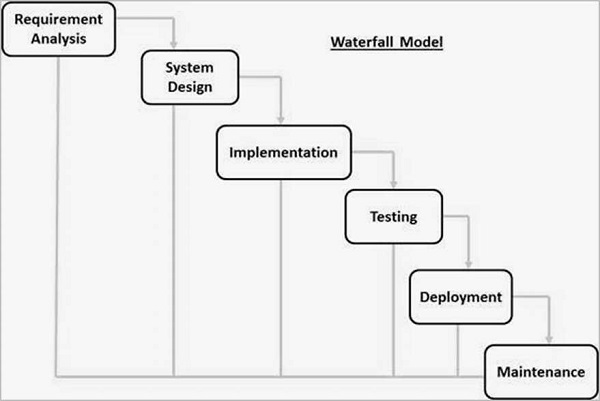What is it?
In Software Engineering, the waterfall model is part of the prescriptive Process Models, being categorized as a sequential, plan-driven process where all actions are planned before starting the project itself.
In principle, each stage should be documented thoroughly and approved before the following stage starts. However, because requirements are frozen in a early stage, this creates a inflexible architecture, and software that does not attend the user’s needs.

Stages / step-by-step
Each stage of the waterfall model reflects the activities performed:
-
Requirements analysis and definition
It’s business usage, problems to be solved, services, constraints and goals are established with the team of developers and potential users, defining each requirements in detail to serve as a system specification.
-
System and software design
The architecture and software design allocate each requirement as a hardware issue or software issue. Then, abstract the entire system with its relationships.
-
Implementation and unit testing
Software is actually developed as program units, where Unit Testing verifies if each unit meets its specification based on its requirements.
-
Integration and system testing
Each program unit is integrated to the complete system and tested, to ensure that requirements have been met. Then, the software is delivered to the customer.
-
Operation and maintenance
After the system is deployed, this stage concerns to correct errors not discovered in past stages, and adding new functionality as new requirements are discovered.
Do not content with this method!
If a developer really wants to follow a waterfall-based model, it doesn’t need to be the traditional waterfall model. Other models were created to fix some problems, like the V Model or Spiral Model.